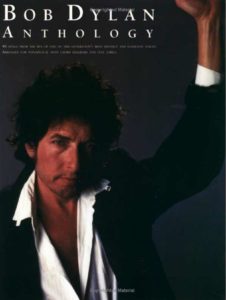Come join us now, and enjoy playing your beloved music and browse through great scores of every level and styles!
Can’t find the songbook you’re looking for? Please, email us at: sheetmusiclibrarypdf@gmail.com We’d like to help you!
Table of Contents
Bob Dylan (sheet music in the #smlpdf)

Best Sheet Music download from our Library.
Please, subscribe to our Library.
If you are already a subscriber, please, check our NEW SCORES’ page every month for new sheet music. THANK YOU!
Bob Dylan Words and Chords (Bob Dylan) Book
Bob Dylan – Blonde On Blonde Songbook
Bob Dylan – Blowin’ In The Wind (Guitar TABS and chords)
Bob Dylan – Fingerpicking Style Guitar and TAB
Bob Dylan – Rock Score (Guitar Songbook)
Bob Dylan – The times they are a’changin’ – Piano solo sheet music with lyrics
Bob Dylan Anthology
Bob Dylan Desire Songbook
Bob Dylan Down In The Groove Songbook
Bob Dylan Encyclopedia, The – Michael Gray (Book)
Bob Dylan Play Acoustic Guitar With – Book + MP3 audio tracks play along sheet music pdf with Tablature
Bob Dylan Songbook, The

Bob Dylan Greatest Hits Full Album – The Best Of Bob Dylan – Bob Dylan Playlist
Bob Dylan (short bio)
One of the great enigmas in Bob Dylan’s life: What happened on July 29, 1966?
A motorcycle accident that was never clarified by the mysterious Nobel Prize-winning musician paralyzed his artistic activity and media visibility, marking a before and after in his artistic career.
On July 29, 1966, on a sunny Friday morning, Robert Allen Zimmerman , better known as Bob Dylan , crashed – or fell – while riding his Triumph motorcycle on the roads of Woodstock, New York, near where he lived for a while. so. Or at least, that’s what the official story says. It is the most talked-about motorcycle accident in the history of rock culture , and yet, like many events and supposed facts that adorn Dylan’s mythology, it is not known for certain whether it really happened.
As an American folk hero, legend and reality are permanently mixed in Bob Dylan ‘s biography . There are those who say that he slipped on an oil spill, others say that the sun clouded his vision and he crashed his motorcycle into the trees, there are also those who say that he actually tripped and flew off the motorcycle. It is said that he had a concussion, that he broke his back, that he broke his neck, that his face had been disfigured and that is why he went into anonymity until he fully recovered. Others claim, based on the absence of evidence, since, at the time, a brief news item was published in the New York Times on August 3 , that none of this ever happened.
Prior to the incident, Dylan was already feeling very bad about his fans and the place they had given him within the American counterculture, a culture and position that he did not particularly like. In that kind of autobiography, which is Chronicles , published in 2004, he said that during the first half of the 60s, he bought a revolver and a shotgun for fear that “wild extremists” would break into the house. of the. “I wanted to set those people on fire,” Dylan once said regarding the hippies, for whom he was an idol and supposedly their main spokesperson, but who, in his words, was a generation he did not know and with whom he that had nothing to do with it.
About that turbulent time, Zimmerman writes: “The atmosphere became tense, and peace difficult. What had been a peaceful refuge suddenly ceased to be so. Flocks of freeloaders made the pilgrimage from California. Stupid asses broke into the house at all hours of the night. At first these were homeless nomads who entered illegally. They seemed rather harmless, but then unscrupulous radicals began to arrive in search of the “ Prince of Protest ”: suspicious-looking characters, chicks who resembled gargoyles, scarecrows, and party-hungry vagabonds who ransacked the pantry.”
One of the most widespread theories about what happened that day on the Woodstock routes is that, in reality, nothing very memorable happened, but rather what was important developed later, when Dylan decided to take a break to never be like that again. that which he detested and that he felt had been put there against his will. The truth is that, as in a good police case, there are no witnesses to the event, the New York State Police did not receive any reports, and Dylan did not set foot in any hospital, even though, according to his lieutenant and friend Robbie Robertson , Bob wore some sort of splint for his neck for the next few weeks.
In fact, Selma Thaler , widow of Dylan’s doctor friend, Ed Thale, said that the man from Minnesota was brought to her house by his then wife, Sara Lownds , and, since he did not want to treat his wounds in a hospital, the doctor He let him stay at his house for a month. Ella Selma does not remember seeing any noticeable injuries on the musician, although her husband had told her that his neck was broken.
One possibility is that the crash occurred leaving the house of Albert Grossman , his manager at that time. Apparently, Dylan was seconded by Sara, who was in her own car and took her husband immediately to Grossman’s after the accident. Albert’s wife, Sally, said she saw no “obvious signs of injury” but did notice that Dylan was “complaining and moaning.”
It is likely that without the legendary “motorcycle accident,” Dylan would not have survived the 1960s and would not continue making music to this day. Exhausted by endless tours that led to a growing addiction to amphetamines and an insane pace of composition and recording – between 1965 and 1966 alone he published three albums, considered by many to be his creative peak and fundamental albums of 20th century popular music: Bringing It All Back Home , Highway 61 Revisited and Blonde on Blonde – there was a good chance that he would end up like James Dean or one of his idols very soon. In fact, just three years later, the 60s would claim three of his most famous martyrs: Janis Joplin , Jim Morrison and Brian Jones .
Dylan decided to seclude himself during the following months and stopped publishing until December 1967, when he returned with John Wesley Harding , a much calmer album with a totally different tone than the colorful explosion of Blonde on Blonde . With a sepia tone from the cover, with markedly country and rural blues sounds, and with religious references – I Dreamed I Saw St. Augustine , The Ballad of Frankie Lee and Judas Priest – and one of their biggest hits – the apocalyptic All Along The Watchtower ‘s guitar , popularized shortly after by Jimi Hendrix , is a great album, one more of the many transformations of someone who, seen in retrospect, never stopped mutating.
Dylan seemed to want to be a new person and this was evident in his sound; the albums that followed, Nashville Skyline and Self Portrait , moved even further away from his persona as “spokesperson for a generation.” In fact, he would never again take a public position on political causes, except when, on May 9, 1974, obviously drunk, he performed at Madison Square Garden in New York at a benefit concert for the victims of the coup d’état against Salvador Allende. of September 11, 1973. He no longer wanted to be a cultural icon, but he was not willing to stop making music either.
His new skin was that of a country and western singer, someone who felt more comfortable recording with people like Johnny Cash or his eternal cronies from The Band rather than with the rock stars of the day. He stopped touring for eight years, as he would only hit the road again in 1974 with The Band and the following year in the Rolling Thunder Revue with people like Joan Baez , Roger McGuinn , Ramblin’ Jack Elliott , T Bone Burnett or Mick Ronson . During the period of his recovery – or voluntary confinement – he recorded the legendary Basement Tapes with The Band , which would only be published, partially, in 1975, and complete in 2014. Today, these tapes are considered fundamental recordings for American roots music. and greatly influenced several generations of musicians.
Whether the motorcycle accident actually happened or not is, at this point, not really important. In Dylan’s life, many times you don’t know what is truth or fiction, myth or reality. Those of us who are fans of him can spend hours and hours debating whether a certain statement is supported or whether other statements from later times, diametrically opposed, are real. Robert Zimmerman is someone who invented himself from day one, becoming one of the most relevant cultural figures of the 20th century.
Along the way, he was a hero of protest and just causes, a beat poet, a rockstar in a leather jacket, a cowboy from the American South, the owner of a traveling circus, a tireless gypsy with no place of his own, a prophet who warned about the end of times and the imminent return of Jesus Christ, a singer with a cavernous voice and a bluesman’s look, one of those who with his eyes tell you “I know something that you don’t know.” Perhaps, Dylan preferred not to end up like James Dean and become all those things throughout his life, and for that, he needed to become Howard Hughes for a while.

Please, subscribe to our Library.
If you are already a subscriber, please, check our NEW SCORES’ page every month for new sheet music. THANK YOU!
